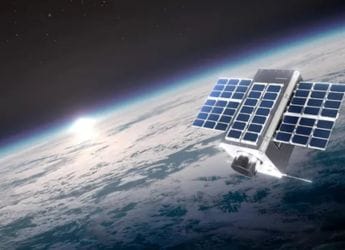- Home
- Laptops
- Laptops News
- Upgrading to Lion means embracing the iPad
Upgrading to Lion means embracing the iPad
By David Pogue, New York Times | Updated: 10 June 2012 02:06 IST

Click Here to Add Gadgets360 As A Trusted Source

Advertisement
It must be excruciating to design a new version of an already mature operating system. How do you add enough new stuff to attract upgrade customers -- without junking up the works? And how do you revamp enough things to make the upgrade exciting -- without alienating people who don't like change?
In Mac OS X 10.7, known as Lion, Apple went with the "shake things up" philosophy. It follows an old Apple pattern of embracing what's cool and progressive, and ruthlessly jettisoning what it considers antiquated. That's great if you love stuff that's cool and progressive, and not so great if you hate people moving your cheese.
Even the way you install Lion is radical; starting immediately, you can download it from the Mac App store for $30. You can't buy it on disc or in a box. It's a 4-gigabyte download. If your Internet connection is too slow, or your monthly Internet plan data caps too restrictive, you can download it at an Apple store, or buy it on a USB flash drive in late August. (I'm writing a handbook to Mac OS X Lion.)
There are some very attractive elements to the download-only system. No serial numbers to type in. No family plans to buy; your $30 covers as many Macs as you own. No discs to store and hunt down later; if you ever need to reinstall, you just re-download the latest version. (Lion requires a post-2006 Mac with Mac OS X Snow Leopard installed.)
If the Lion upgrade is about any one thing, it's about the iPad.
What made the iPad a mega-hit? Two factors, really. Factor 1: simplicity. No overlapping windows; every app runs full screen. No Save command; everything's autosaved. No files or folders. No menus. All your apps are in one place, the Home screen.
Factor 2: the multitouch screen. You cycle through screens by swiping the glass, zoom out by pinching and rotate something by twisting two fingers.
In Lion, Apple has gone as far as it can go to bring those factors to the Mac.
Full-screen mode makes a program fill the screen, edge to edge, without any scroll bars, menus or other window-edge clutter. It's refreshing and useful, especially on laptops, because your screen feels so much bigger.
Autosave spares your having to remember to hit Save as you work. New commands in the title bar can rewind your document to an earlier state, lock it in one version or spin off a copy that you want to take in a different direction.
There's even a new program, Launchpad, a clone of the iPad's Home screen, with evenly spaced app icons, on swipeable pages, that open with one click.
And what about Factor 2, the touch screen?
Touch-screen computers don't work. There, I said it. Spending the day with your arm outstretched, manipulating tiny controls on a vertical surface is awkward and exhausting. The ache you feel later is not-so-affectionately known as Gorilla Arm.
Apple has built what it considers a better solution, a horizontal multitouch surface. That's the trackpad of its laptops, and the top surface of its current mouse.
In Lion, there are iPad-like multitouch gestures. Pinch four fingers to open Launchpad. Twist two to rotate. Swipe up with three fingers to open Mission Control, a clickable constellation of thumbnails that show all open programs and windows. And so on.
Warning: you scroll a page up by dragging two fingers up, as on the iPad. It makes sense; after all, you scroll the screen left by dragging left, and right to go right. But it takes a couple days to stop scrolling the wrong direction, as we've been doing for decades.
Does the iPadization of the Mac succeed? There's good news, bad news and then good news.
The good news is that once you learn all of this stuff, it does work. Swiping sideways with three fingers takes you from one full-screen app to the next, animated as though someone's dealing full-screen cards. Launchpad would be a better fit for technophobes if it were always there waiting, and not a program you have to open manually every time; but otherwise, the Lion makeover is fluid and satisfying.
The bad news is that a lot of the promise is Apple's wishful thinking. Features like full-screen mode, autosave and rotate/zoom gestures generally work only in Apple programs. Other companies' apps, like Word and Photoshop, have to be upgraded to incorporate these new features.
The final good news, though, is that you can ignore all of this. If you prefer the status quo, you don't ever have to put an app into full-screen mode, or use a touch gesture, or open apps from the Launchpad. You can even turn off that reversed-scrolling-direction thing. Just this once, Apple isn't dictating the way you have to do things.
Meanwhile, you still get dozens of other nips and tucks for your 30 bucks. Some are terrific.
The AirDrop window, for example, shows the icons of nearby Macs running Lion. You can transfer a file just by dragging it onto the appropriate Mac's icon. You don't have to mess with permissions or sharing setup -- just an O.K. button, and then the deed is done.
Many apps have been redesigned to look better, or at least more iPad-like, or to exploit full-screen mode. Some, like Mail, exhibit some really thoughtful design advances, like folder bookmarks that can stand in for the space-wasting folder list. Others, like iCal and Address Book, hide important elements, like the list of calendar categories or address groups, for no good reason. Give credit to iCal, though, for knowing how to parse new-appointment notations like "Chris lunch Fri 2 pm."
More goodies in the hit parade: if you drag one folder onto another with the same name, the Mac offers to merge their contents. You can now resize a window by dragging any edge. Preview lets you add your signature to a PDF document quickly and easily -- a signature you've recorded just by holding it up to your Mac's camera.
A Resume feature offers to reopen all programs and windows just the way you had them when you shut down. The Migration program can bring over all your files, addresses, calendars, mail accounts and Picasa photos from a Windows PC and put them in the right places on the Mac.
Ordinarily, $30 would be a great price for this huge list of refinements. But there are some good reasons not to rush right away into this Lion's den.
Apple giveth, and Apple taketh away. This time, it hath taken away Rosetta, a software kit that allowed ancient programs to run on the Intel chips that Apple started using in 2006. A few programs won't run without it, including, alarmingly, Quicken. Apart from switching to a different finance program, like the lame Quicken Essentials or the lesser-known iBank, no solution is in sight.
Note, too, that there are a few bugs on this newborn cub. I encountered intermittent glitches with the Resume feature, MobileMe syncing alerts, missing menu bars, various Mail features and, on one very special day, dog-slow program opening. Apple attributes most of those problems to a rare endless-loop iCal upgrade problem, unique to my laptop, which it says it will fix in an update.
The Lion upgrade, in other words, is classic Apple: innovative to some, gimmicky to others, big leaps forward, a few stumbles back. It may never be the king of the jungle. But once the world's software companies have fully Lionized their wares, and once Apple exterminates the bugs, Mac OS X 10.7 might be something even more exotic: a fast, powerful, good-looking, virus-free, thoroughly modern operating system
In Mac OS X 10.7, known as Lion, Apple went with the "shake things up" philosophy. It follows an old Apple pattern of embracing what's cool and progressive, and ruthlessly jettisoning what it considers antiquated. That's great if you love stuff that's cool and progressive, and not so great if you hate people moving your cheese.
Even the way you install Lion is radical; starting immediately, you can download it from the Mac App store for $30. You can't buy it on disc or in a box. It's a 4-gigabyte download. If your Internet connection is too slow, or your monthly Internet plan data caps too restrictive, you can download it at an Apple store, or buy it on a USB flash drive in late August. (I'm writing a handbook to Mac OS X Lion.)
There are some very attractive elements to the download-only system. No serial numbers to type in. No family plans to buy; your $30 covers as many Macs as you own. No discs to store and hunt down later; if you ever need to reinstall, you just re-download the latest version. (Lion requires a post-2006 Mac with Mac OS X Snow Leopard installed.)
If the Lion upgrade is about any one thing, it's about the iPad.
What made the iPad a mega-hit? Two factors, really. Factor 1: simplicity. No overlapping windows; every app runs full screen. No Save command; everything's autosaved. No files or folders. No menus. All your apps are in one place, the Home screen.
Factor 2: the multitouch screen. You cycle through screens by swiping the glass, zoom out by pinching and rotate something by twisting two fingers.
In Lion, Apple has gone as far as it can go to bring those factors to the Mac.
Full-screen mode makes a program fill the screen, edge to edge, without any scroll bars, menus or other window-edge clutter. It's refreshing and useful, especially on laptops, because your screen feels so much bigger.
Autosave spares your having to remember to hit Save as you work. New commands in the title bar can rewind your document to an earlier state, lock it in one version or spin off a copy that you want to take in a different direction.
There's even a new program, Launchpad, a clone of the iPad's Home screen, with evenly spaced app icons, on swipeable pages, that open with one click.
And what about Factor 2, the touch screen?
Touch-screen computers don't work. There, I said it. Spending the day with your arm outstretched, manipulating tiny controls on a vertical surface is awkward and exhausting. The ache you feel later is not-so-affectionately known as Gorilla Arm.
Apple has built what it considers a better solution, a horizontal multitouch surface. That's the trackpad of its laptops, and the top surface of its current mouse.
In Lion, there are iPad-like multitouch gestures. Pinch four fingers to open Launchpad. Twist two to rotate. Swipe up with three fingers to open Mission Control, a clickable constellation of thumbnails that show all open programs and windows. And so on.
Warning: you scroll a page up by dragging two fingers up, as on the iPad. It makes sense; after all, you scroll the screen left by dragging left, and right to go right. But it takes a couple days to stop scrolling the wrong direction, as we've been doing for decades.
Does the iPadization of the Mac succeed? There's good news, bad news and then good news.
The good news is that once you learn all of this stuff, it does work. Swiping sideways with three fingers takes you from one full-screen app to the next, animated as though someone's dealing full-screen cards. Launchpad would be a better fit for technophobes if it were always there waiting, and not a program you have to open manually every time; but otherwise, the Lion makeover is fluid and satisfying.
The bad news is that a lot of the promise is Apple's wishful thinking. Features like full-screen mode, autosave and rotate/zoom gestures generally work only in Apple programs. Other companies' apps, like Word and Photoshop, have to be upgraded to incorporate these new features.
The final good news, though, is that you can ignore all of this. If you prefer the status quo, you don't ever have to put an app into full-screen mode, or use a touch gesture, or open apps from the Launchpad. You can even turn off that reversed-scrolling-direction thing. Just this once, Apple isn't dictating the way you have to do things.
Meanwhile, you still get dozens of other nips and tucks for your 30 bucks. Some are terrific.
The AirDrop window, for example, shows the icons of nearby Macs running Lion. You can transfer a file just by dragging it onto the appropriate Mac's icon. You don't have to mess with permissions or sharing setup -- just an O.K. button, and then the deed is done.
Many apps have been redesigned to look better, or at least more iPad-like, or to exploit full-screen mode. Some, like Mail, exhibit some really thoughtful design advances, like folder bookmarks that can stand in for the space-wasting folder list. Others, like iCal and Address Book, hide important elements, like the list of calendar categories or address groups, for no good reason. Give credit to iCal, though, for knowing how to parse new-appointment notations like "Chris lunch Fri 2 pm."
More goodies in the hit parade: if you drag one folder onto another with the same name, the Mac offers to merge their contents. You can now resize a window by dragging any edge. Preview lets you add your signature to a PDF document quickly and easily -- a signature you've recorded just by holding it up to your Mac's camera.
A Resume feature offers to reopen all programs and windows just the way you had them when you shut down. The Migration program can bring over all your files, addresses, calendars, mail accounts and Picasa photos from a Windows PC and put them in the right places on the Mac.
Ordinarily, $30 would be a great price for this huge list of refinements. But there are some good reasons not to rush right away into this Lion's den.
Apple giveth, and Apple taketh away. This time, it hath taken away Rosetta, a software kit that allowed ancient programs to run on the Intel chips that Apple started using in 2006. A few programs won't run without it, including, alarmingly, Quicken. Apart from switching to a different finance program, like the lame Quicken Essentials or the lesser-known iBank, no solution is in sight.
Note, too, that there are a few bugs on this newborn cub. I encountered intermittent glitches with the Resume feature, MobileMe syncing alerts, missing menu bars, various Mail features and, on one very special day, dog-slow program opening. Apple attributes most of those problems to a rare endless-loop iCal upgrade problem, unique to my laptop, which it says it will fix in an update.
The Lion upgrade, in other words, is classic Apple: innovative to some, gimmicky to others, big leaps forward, a few stumbles back. It may never be the king of the jungle. But once the world's software companies have fully Lionized their wares, and once Apple exterminates the bugs, Mac OS X 10.7 might be something even more exotic: a fast, powerful, good-looking, virus-free, thoroughly modern operating system
Comments
Get your daily dose of tech news, reviews, and insights, in under 80 characters on Gadgets 360 Turbo. Connect with fellow tech lovers on our Forum. Follow us on X, Facebook, WhatsApp, Threads and Google News for instant updates. Catch all the action on our YouTube channel.
Related Stories
Popular on Gadgets
- Samsung Galaxy Unpacked 2025
- ChatGPT
- Redmi Note 14 Pro+
- iPhone 16
- Apple Vision Pro
- Oneplus 12
- OnePlus Nord CE 3 Lite 5G
- iPhone 13
- Xiaomi 14 Pro
- Oppo Find N3
- Tecno Spark Go (2023)
- Realme V30
- Best Phones Under 25000
- Samsung Galaxy S24 Series
- Cryptocurrency
- iQoo 12
- Samsung Galaxy S24 Ultra
- Giottus
- Samsung Galaxy Z Flip 5
- Apple 'Scary Fast'
- Housefull 5
- GoPro Hero 12 Black Review
- Invincible Season 2
- JioGlass
- HD Ready TV
- Laptop Under 50000
- Smartwatch Under 10000
- Latest Mobile Phones
- Compare Phones
Latest Gadgets
- Realme Narzo 90x 5G
- Realme Narzo 90 5G
- Vivo S50 Pro Mini
- Vivo S50
- OPPO Reno 15c
- Redmi Note 15 5G
- Redmi Note 15 Pro 5G
- Redmi Note 15 Pro+ 5G
- Asus ProArt P16
- MacBook Pro 14-inch (M5, 2025)
- OnePlus Pad Go 2
- Poco Pad M1
- Just Corseca Skywatch Pro
- Honor Watch X5
- Acerpure Nitro Z Series 100-inch QLED TV
- Samsung 43 Inch LED Ultra HD (4K) Smart TV (UA43UE81AFULXL)
- Asus ROG Ally
- Nintendo Switch Lite
- Haier 1.6 Ton 5 Star Inverter Split AC (HSU19G-MZAID5BN-INV)
- Haier 1.6 Ton 5 Star Inverter Split AC (HSU19G-MZAIM5BN-INV)
© Copyright Red Pixels Ventures Limited 2025. All rights reserved.

















